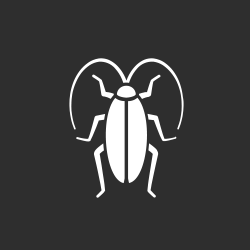A person from the creatures of the world all in all that impacts ominously on human activities. The human reaction relies upon the significance of the harm done and will go from resistance, through discouragement and the board, to endeavors to totally destroy the pest. Pest Control Southend measures might have proceeded as a feature of a coordinated pest the boarding procedure.

In horticulture :
pests are kept under control by social, substance, and natural means. Furrowing and development of the dirt prior to planting relieve the pest weight and there is a cutting edge pattern to restrict the utilization of pesticides beyond what many would consider possible. This can be accomplished by checking the yield, possibly applying insect poisons when fundamental, and by developing assortments and harvests which are impervious to pests. Where conceivable, organic means are utilized, empowering the regular adversaries of the pests and presenting appropriate hunters or parasites.
History :
- Pest control is basically pretty much as old as horticulture, as there has consistently been a need to keep crops liberated from pests. Like some time in the past as 3000 BC in Egypt, felines were utilized to control pests of grain stores like rodents.
- Ferrets were very much prepared by 500 AD in Europe for use as mousers. Mongooses were acquainted into homes with control rodents and snakes, most likely by the antiquated Egyptians.
- The regular methodology was presumably quick to be utilized since it is nearly simple to obliterate weeds by consuming them or furrowing them under and killing bigger contending herbivores.
- Methods, for example, crop pivot, buddy planting (otherwise called intercropping or blended editing), and the specific rearing of pest-safe cultivars have a long history.
Chemical pesticides :
At the point when the Sumerians utilized sulfur compounds as bug sprays. Present-day pest control was invigorated by the spread across the United States of the Colorado potato scarab. After numerous discussions, arsenical combinations were used to control the unpleasant little creature and the expected hurting of the human people didn’t occur. This drove the way to an inescapable acknowledgment of bug sprays across the landmass.
With the industrialization and motorization of agribusiness in the eighteenth and nineteenth hundreds of years, and the presentation of the bug sprays pyrethrum and derris, substance pest control became far-reaching. In the twentieth century, the disclosure of a few engineered bug sprays, like DDT, and herbicides helped this turn of events.
Biological control :
at the point when settlements of weaver subterranean insects, Oecophylla smaragdina, were deliberately positioned in citrus ranches to control bugs and caterpillars. Additionally in China, ducks were Utilized in paddy fields to devour pests, as delineated in old cavern craftsmanship. In 1762, an Indian mynah was brought to Mauritius to control bugs, and about a comparable time, citrus trees in Burma were related with bamboos to allow underground creepy crawlies to pass among them and help with controlling caterpillars. During the 1880s, ladybirds were utilized in citrus manors in California to control scale creepy crawlies, and other organic control tests followed. The presentation of DDT, a modest and powerful compound, put a viable stop to natural control tests.
